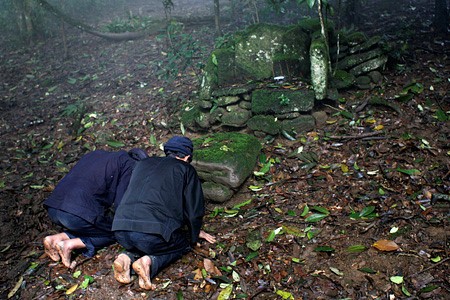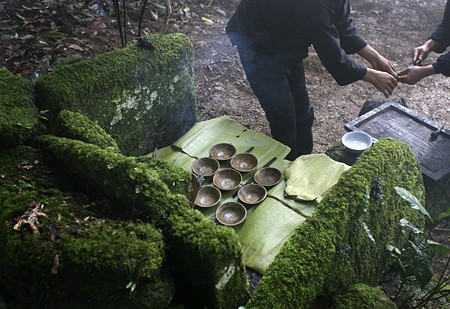(VOVworld) – The lives of the Ha Nhi ethnic people are closely associated with the forest and brooks. They consider the forest their house and brooks the source of life and spiritual support. Generations of Ha Nhi have evolved many ceremonies and festivals to worship and protect the forest and brooks.
 |
The Ha Nhi men worship the forest and brooks
|
The Ha Nhi believe that all things have souls and that the genies of forest, water, and mountain are dear to people. The Ha Nhi live close to nature. They have rules to protect the forest and water sources and strictly punish for the violators. Each Ha Nhi village owns a forest and the villagers are responsible for protecting it.
Nguyen Huu Son, an official from the Lao Cai Department of Culture, Sports, and Tourism, says: “Each village owns a forest. They worship the forest genie and protect everything in the forest, even broken and rotting trees. On worship days, the villagers are forbidden to go into the forest.”
 |
They prepare offering for the forest worship
|
During 3 days of worship, they plant a bamboo pole at the forest entrance and hang a pig’s trotter on it. It’s a “no entry” sign and anyone who violates it has to donate a pig to the village. Ly So Cho, a Ha Nhi man in Y Ty commune, Bat Xat district, says: “The pig’s trotter is an offering to the forest. No one is allowed to go into the forest because these days are for the souls of grasses, trees, and other things.”
The villagers contribute chickens and pigs to the forest worship ceremony. The pig is a sacred animal and the Ha Nhi treat pig bones as the souls of the genies who protect the village. Chu Gi Tho is a Ha Nhi man in Y Ty commune: “On the forest worship days, we bring offerings to the forest including steamed glutinous rice, chicken, and pork. The genies can see our gratitude.”
Ha Nhi people have paid special importance to protecting the environment, soil, and water sources, which are the source of their life. They have cultivated terraced fields on hillsides for hundreds of years and have a large irrigation network. They also use water to power rice-pounding mortars.